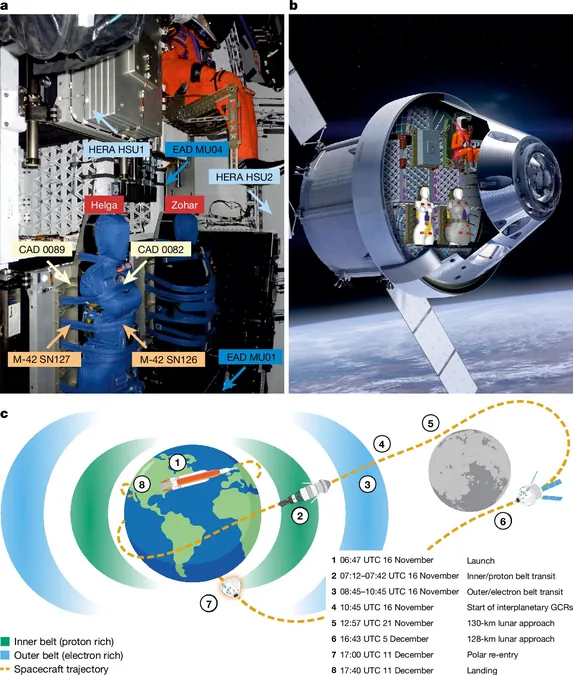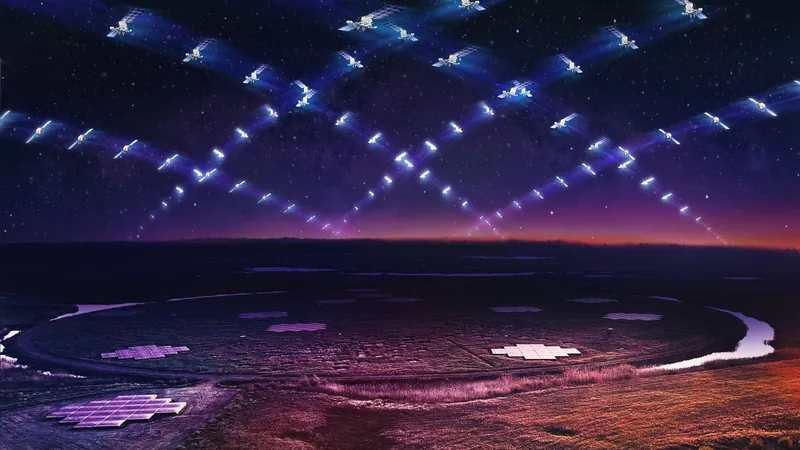
NASA's Artemis II Mission: New Data Reveals How Astronauts Will Combat Lunar Radiation!
2024-09-19
NASA's Artemis II Mission: New Data Reveals How Astronauts Will Combat Lunar Radiation!
In exciting news for space exploration, a comprehensive study conducted by a dedicated team of technical and health specialists has confirmed that astronauts aboard the Orion spacecraft will have substantial protection from radiation during the upcoming Artemis II mission to the moon. Set to launch next year, this mission aims to bring four astronauts on a historic lunar flyby, marking another significant step towards sustainable human presence on the moon.
The recent analysis, which was published in the prestigious scientific journal Nature, utilized data collected from various sensors situated both inside and outside the Orion spacecraft during its successful Artemis I mission in 2022. This test mission, which included two lunar flybys and carried dummies in place of humans, provided invaluable insights into the safety protocols required for sending astronauts back to the lunar surface.
One of the critical safety concerns addressed was the exposure to radiation from both solar activity and cosmic sources. To investigate this, engineers integrated advanced radiation sensors throughout the Orion. Moreover, the spacesuits worn by the dummies were outfitted with protective gear, including a specially designed vest for enhanced shielding.
The results from the study were encouraging: the radiation exposure levels anticipated for astronauts are well below established safety thresholds. Researchers meticulously analyzed the data, discovering that the strategic design of the Orion not only meets but exceeds current safety guidelines.
In their findings, the research team also highlighted effective methods to further reduce radiation exposure. By adjusting the spacecraft's orientation while traversing the Van Allen radiation belts, exposure could potentially be decreased by an impressive 50%. Additionally, the study revealed significant variances in radiation levels within the capsule itself; areas of optimal protection recorded radiation levels four times lower than the more exposed sections. This means that during especially intense solar events, simply relocating astronauts to the most shielded sections of the spacecraft could significantly enhance their safety.
With the long-term goal of establishing a sustainable human presence on the moon, this data not only assures the safety of future astronauts but also reinforces the importance of rigorous studies in planning for manned missions beyond Earth. The Artemis II mission promises to usher in a new era of exploration, paving the way for humanity's return to the moon and beyond — are we ready for the journey?
Stay tuned for more groundbreaking updates as humanity prepares to take one giant leap back toward the moon!



 Brasil (PT)
Brasil (PT)
 Canada (EN)
Canada (EN)
 Chile (ES)
Chile (ES)
 España (ES)
España (ES)
 France (FR)
France (FR)
 Hong Kong (EN)
Hong Kong (EN)
 Italia (IT)
Italia (IT)
 日本 (JA)
日本 (JA)
 Magyarország (HU)
Magyarország (HU)
 Norge (NO)
Norge (NO)
 Polska (PL)
Polska (PL)
 Schweiz (DE)
Schweiz (DE)
 Singapore (EN)
Singapore (EN)
 Sverige (SV)
Sverige (SV)
 Suomi (FI)
Suomi (FI)
 Türkiye (TR)
Türkiye (TR)